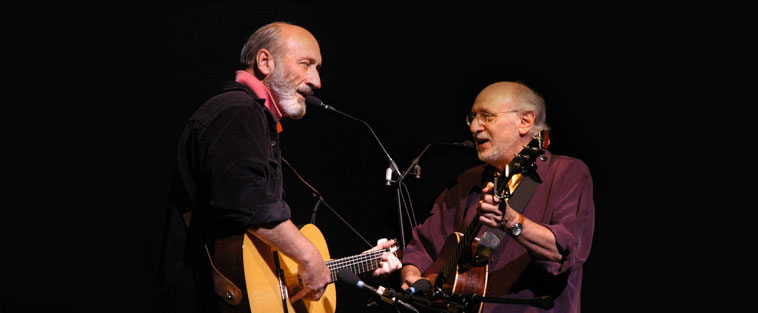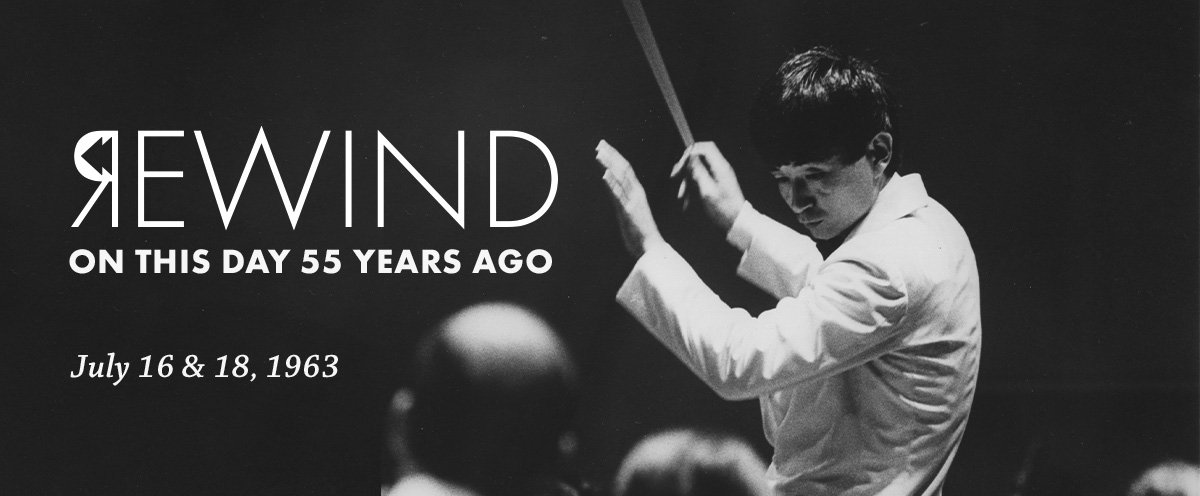What do neo-soul innovator D’Angelo, “Lady Marmalade” Patti LaBelle, guitar god John Mayer, “Shout” singer Ronald Isley, and gospel great Smokie Norful all have in common? Well, outside of being exceptional artists in their respective fields, they’ve all had the fingerprints of star session guitarist Isaiah Sharkey on their recent tours or albums (including a multiple Grammy winner) in the midst his steady ascent as an esteemed solo artist.
Read MoreRavinia Magazine
Discovering/Dreaming: Fred Hersch is a mindful maestro
His public statement about living with HIV was particularly bold, given that Hersch talked openly about the virus during a time when contracting it was practically a death sentence. “A lot of people said, ‘Fred, you shouldn’t do this. It’ll kill your career. Nobody will want to book you. They’ll figure you’ll be dead by next year.’ Which was possible,” he recalls. “But as time went on, I’ve beaten all kinds of odds in terms of my health. My career is bigger and better than ever.
Read MoreThe Existential Question: Marin Alsop is here for more seriously popular Bernstein
The floodtide of events with which Ravinia celebrated Bernstein’s 100th birthday in 2018 was only the beginning. The grand celebration continues for a second festival summer with nearly a dozen Bernstein-themed programs curated by the American conductor Marin Alsop, Bernstein’s final (and only female) protégé and one of the world’s most prominent champions of his music.
Read MorePeter Yarrow on His Ravinia Return: Passionate as Folk
Peter Yarrow and Noel Paul Stookey—two-thirds of the iconic folk trio, Peter, Paul and Mary, return to Ravinia on Sun. June 16. The trio first appeared at Ravinia in 1963. This year marks Yarrow and Stookey’s 24th Ravinia appearance and the first since 2006. Mary Travers died three years later.
Read MoreTapping the Veins: The beating heart of Sugarland gives lifeblood to the moment
There is no doubt that the statistics surrounding Sugarland are quite impressive. Since the band’s inception in 2002, Sugarland has sold over 10 million albums domestically and have earned seven number-one singles to date, including “All I Want to Do,” “It Happens,” and the tear-inducing “Already Gone.” On top of all that, their music has accumulated well more than a quarter-billion streams, making them one of the most popular country music duos of all time.
Read MoreEverything After: Counting Crows’ Adam Duritz favors freedom over fame
As ready and willing as Duritz is to come to Ravinia, he’s completely uncertain of what attendees should expect from the setlist outside of knowing the full catalogue is on the table with the “25 Years and Counting” aspect. “The set changes every night anyway, especially this summer because we’re not touring much,” he confirms. “I don’t know that there’s anything that I feel like we have to play. We tend to play ‘Long December’ most of the time. That’s never been boring to us, so that’s one we tend to play every night no matter what.
Read MoreBeing Green, Being Keen: Melissa Etheridge makes her life a lyric for the public ethic
Like millions of others listening to the radio in the mid-’60s, Melissa Etheridge remembers when she first heard The Beatles. But she wasn’t a lovestruck adolescent dreaming about dating John, Paul, George, or Ringo; she was a toddler experiencing an epiphany.
Read MoreRUMBLINGS OF A NEW WEST SIDE STORY
More than a century after his birth, Leonard Bernstein remains a pop culture phenomenon. Hot off the success of A Star Is Born, Bradley Cooper will direct and star in a biopic about multi-hyphenate who many consider the most important musician in American history. At the same time, America’s most successful filmmaker is remaking the treasured 1962 Best Picture Oscar winner West Side Story. Someone with Spielberg’s track record of blockbusters is in a position to pick only the best.
Read MoreJAZZ PIANIST DAN TEPFER FINDS CODING A MUSICAL INSPIRATION
Jazz pianist and composer Dan Tepfer is releasing his album Natural Machines tomorrow, May 17, with a twist. On this album, Tepfer plays a unique digital player piano called the Disklavier, which takes the music he plays on the piano, runs it through a computer program he wrote, and plays it back over the instrument.
Read MoreBless the Child: Shemekia Copeland has got her bold
These days, “Your Mama’s Talkin’,” a song from Chicago-based blues scion Shemekia Copeland’s 1998 debut album, Turnin’ Up the Heat, has taken on a whole new meaning. Copeland became a parent in 2016, and when she isn’t wrangling her “little man,” she says she’s thinking about “the type of world I brought him into, and my concerns for him and what he will have to face.”
Read MoreTuning Up: Musicians and conservatories break the cycle of performance injuries
Melissa White and Elena Urioste got through the beginnings of their professional violin careers without thinking much about their bodies. If they had performance-related pain, they ignored it as long as they could.
Then, in 2009, they separately found yoga.
Read MoreWhere Can I Find a Career Like That? Rick Springfield is always writing up, never off
For the 69-year-old Australian-born Richard Lewis Springthorpe (his real name), the Grammy Award–winning song would be life-changing. At the same time, however, Springfield was still an unproven entity; prior album releases did well, but radio play and massive sales were not yet happening for him in the age of MTV. So, the singer-songwriter took a role as the uber-handsome and dashing Dr. Noah Drake on the daytime soap opera General Hospital—just to ensure he got a steady paycheck, he says.
And then it happened.
Read MoreThe Write Stuff: John Prine delivers a darling for a Hall of Fame year
More than 50 years ago, Prine returned home from an Army stint in Germany and began work as a US postal carrier. Daily and dutifully walking the unapologetic, diversely populated, middle-class streets of his west-suburban Chicago hometown, he mentally molded melodies and lyrics in his head to break the monotony of his Maywood, IL, mail route.
Read MoreAll Smiles: Rob Thomas is living for good
It was 2015, and Rob Thomas was scared to death.
His wife, Marisol Maldonado, was waiting for her phone to ring, waiting to hear what the doctor had to say about the tunnel vision she had been experiencing, waiting to find out if the lesion that the MRI had found at the base bone of her brain was something that would change their lives forevermore.
And there they were, one of music’s biggest music hit makers and one of the world’s most beautiful models sitting in a dreary parking lot in Chicago, waiting to learn their collective fate.
Read MoreKey Change: David Foster Embraces a New Muse in a Relatively Major (Broad)way
What Foster is doing is creating his first Broadway musical, a show based on the 1930s’ wide-eyed, Jazz Age flapper animated cartoon character Betty Boop. A creative team of Broadway A-listers has signed on for the project, including director/choreographer Jerry Mitchell, whose work includes the recently premiered Pretty Woman: The Musical, the Gloria Estefan bio-musical On Your Feet, and Cyndi Lauper and Harvey Fierstein’s critically acclaimed Kinky Boots (all three of which had their pre-Broadway tryouts in Chicago). Veteran television scribe Sally Robinson is writing the book, and Foster’s score will boast lyrics by Tony Award nominee Susan Birkenhead.
“It’s my first try at Broadway,” Foster says of the musical, whose subject matter demanded a very original story. “There never was a story because [Betty Boop] is a two-minute-at-a-time cartoon. I knew I wanted to make a step toward Broadway and musicals, and honestly Betty Boop was the first person to ask me. [Laughs.] So we had to create the story. It’s currently waiting for the script’s final punch-up. And then hopefully we’ll jump into a reading and then a workshop.”
Rewind: July 16 and 18, 1963
If anyone had a knack for defying convention with an astounding rate of success, it was Leonard Bernstein. When he became music director of the New York Philharmonic in 1958—15 years after his surprise debut with the same ensemble, then only months into his tenure as its assistant conductor—the tradition had been for those assistants to remain in the position for only one year. But then Seiji Ozawa caught his eye. The winner of the 1960 Koussevitsky Prize at Tanglewood, where Bernstein had been a close advisor for the conducting and orchestral programs since 1951, and subsequently the winner of a scholarship to study with the quintessential maestro Herbert von Karajan, Ozawa was quickly sought by Bernstein to become one of the NY Phil assistants in 1961. One of three conductors in the role, Ozawa was nonetheless a clear favorite, being chosen to lead a performance during the orchestra’s 1961 tour and retaining a close association with Bernstein, if unofficially, through the maestro’s 1965 sabbatical.
The program insert for Seiji Ozawa’s hastily arranged Ravinia and Chicago Symphony Orchestra debut
The especial attention from “America’s music teacher” of course drew the attention of other ensembles. Ozawa made debuts with the orchestras of San Francisco, Minneapolis, Detroit, and Montreal between 1962 and 1963. During the latter summer, he received a call similar to that which Bernstein received in 1943: the conductor for the Chicago Symphony Orchestra’s concerts at Ravinia has suddenly taken ill at the 11th hour, and could Ozawa come conduct his concerts. Even with a program inherited from Georges Prêtre, comprising Beethoven’s Third Leonore Overture, Grieg’s Piano Concerto, and Dvořák’s “New World” Symphony, Ozawa appointed himself well in his Ravinia and CSO debuts on July 16, with the Chicago Daily News readily recognizing the influence of “Leaping Lenny”: “While conducting, he [Ozawa] slides easily from waltz to rhumba to twist to a modified version of the Limbo … however, he remains in control of the situation. Ozawa can make an orchestra do almost anything he wants … it would be hard to name a conductor of his age more gifted, and it will be fascinating to see what becomes of him.”
Ozawa leads a rehearsal with the Chicago Symphony Orchestra during his first season as Ravinia’s Music Director, 1964
The second night, July 18, was opened up to Ozawa, which caused the Daily News to assert, “It is necessary to revise the glowing estimation that appeared in this space … because by evening’s end it was becoming hard to think of many more gifted conductors of any age. This time, Ozawa faced and passed the only worthwhile test of a conductor: he brought a new work [Takemitsu’s Requiem for Strings], rehearsed the orchestra in it thoroughly, and then secured a performance of polish and poetic imagination. Very little time should elapse before he shows up again at the head of the Chicago Symphony.” In very little time indeed—just a few days more than a month later—Ozawa was named the first music director of Ravinia, where he would bring the flair and passion for the music of his time (as well as music written specifically for his time) that he shared so similarly with his mentor, Bernstein, through the end of the decade. ■
Building Bridges: The iron is hot for fusing jazz and classical in RSMI's composition competition
It was in the spirit of the intense and aspirational goals of RSMI’s ambitious programs for jazz and classical musicians—as well as the bold musical vision of Leonard Bernstein, whom Ravinia has just gotten underway celebrating with an expansive multiyear tribute—that Bridges, an international jazz and classical fusion composition competition, was born. It offered an imaginative challenge for artists ages 17–30 (the same age range as the 60–70 performers invited to RSMI each year) to compose original works specifically for a string quartet and a jazz trio. “The Bridges competition was conceived to help give young professionals a place on the map—if not the world stage—which is precisely what RSMI has been granting singers and instrumentalists for the past three decades,” Kauffman said. The directors of the RSMI Program for Jazz had long dreamed of such a competition, having written many works combining jazz and classical music and players themselves.
Robert Chen: The CSO Concertmaster Musters a solo concert
It's an oft-told tale. A little girl, attending her first live symphony concert, is enthralled by the imposing conductor waving a baton. She turns to her parents: “Mommy, Daddy, that’s what I want to do when I grow up.” A little boy, hearing a flute or a clarinet or a violin or a tuba for the first time, is mesmerized. He clamors for an instrument of his own. Decades later, that little boy and girl have become internationally acclaimed musicians accepting the applause of audiences from San Francisco to Sydney, Australia.
Tim Fain and Nicholas Britell Bring Wide(screen) sounds with "Once Upon a Score"
Even just a decade or two ago, classical musicians might look back occasionally to the Baroque era or try out a new work, but most stuck to Johannes Brahms, Franz Schubert, and the genre’s other tried-and-true standard bearers. But today, many of the field’s younger generation of artists, who can access music from virtually any time or place in seconds on their iPhones, don’t feel nearly so confined. They might play a quartet by Ludwig van Beethoven one night and then join forces with an indie-rock band the next.
Matthew Whitaker: Taking Jazz by Ear
Imagine for a moment that you’re a jazz pianist/organist. Also imagine that you’ve made a recording, a good part of which is your own material. And while you’re at it, imagine that said recording followed several major public appearances: Apollo Theater in Harlem, Jazz at Lincoln Center, Weill Recital Hall at Carnegie Hall, and even a segment on Ellen (she loved you so much that she gave you a vibraphone!). You also own a music publishing company and have toured abroad, performing in such far-flung places as France, Italy, Morocco, and Japan. Along the way you’ve picked up some major endorsement deals from Yamaha and Hammond.






















